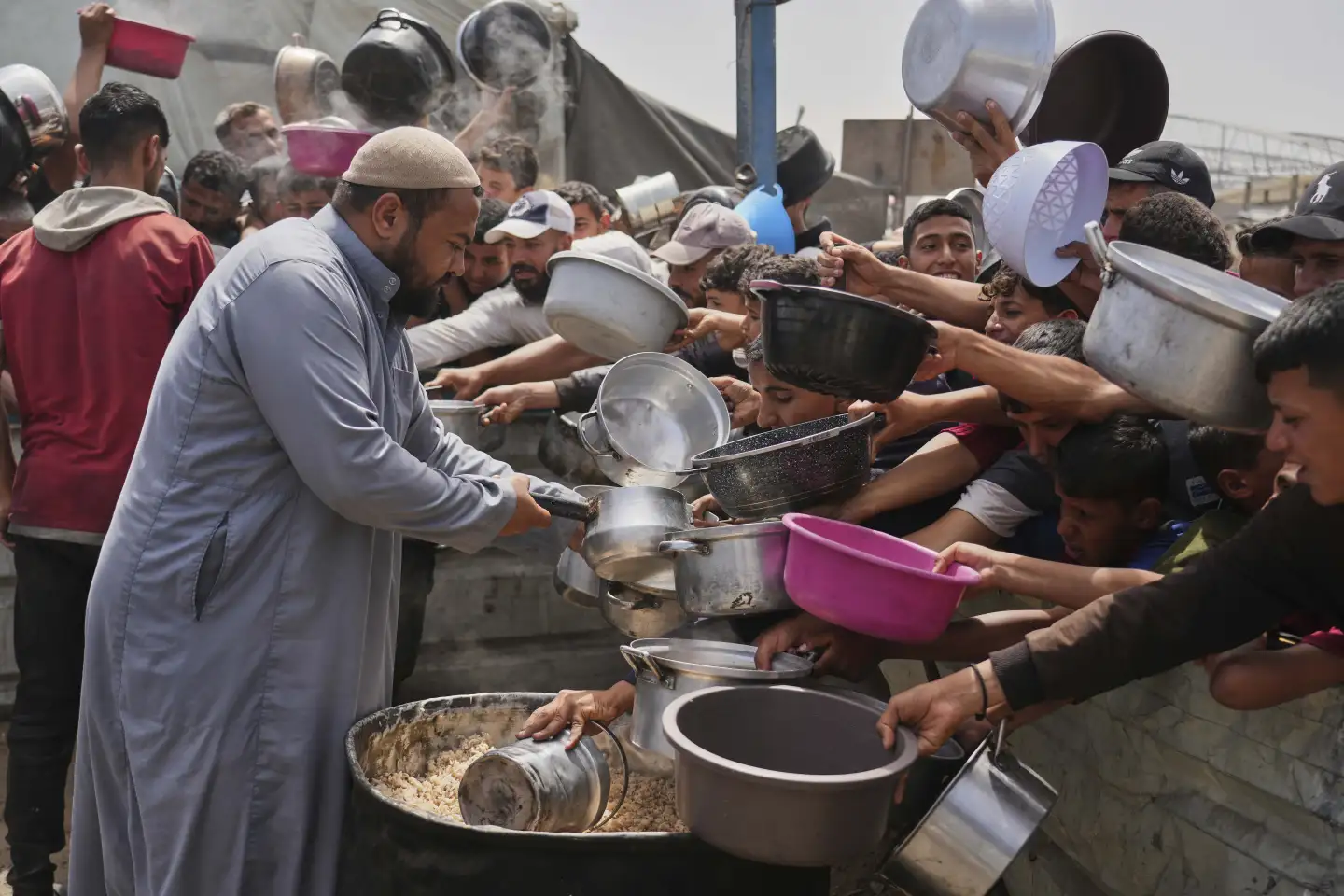The United Nations World Food Programme (WFP) announced on 25 April that it has depleted its food stocks in Gaza, warning that humanitarian conditions are deteriorating rapidly as border crossings remain closed for a seventh consecutive week.
According to the agency, the last of WFP’s available food supplies were delivered to community kitchens across the Gaza Strip, which have been serving as a primary source of food assistance for many displaced families. WFP explained that these kitchens are expected to run out of food within days. As of 25 April 2025, the kitchens were able to provide meals to roughly half of Gaza’s population, covering only about 25 percent of their daily food requirements.
By the end of March 2025, the WFP had to close all 25 bakeries it was supporting because they ran out of wheat flour and cooking fuel. Around the same time, food parcels which are pre-packed boxes or bags containing essential food items like rice, flour, canned goods, cooking oil, and sometimes basic hygiene products meant to last families two weeks were also used up.
The WFP is the world’s largest humanitarian organization focused on emergency food assistance and long-term food security efforts. The organization said it is very worried about the shortage of clean water and cooking fuel, with many people now burning whatever they can find to cook meals.
The agency further highlighted that no humanitarian or commercial goods have entered Gaza since the border closures started since 2 March, more than seven weeks ago, making this the longest shutdown the area has ever faced.
As a result, food prices have soared by up to 1,400 percent compared to prices during the last ceasefire commenced on 19 January 2025. This agreement, part of a multi-phase deal, aimed to halt hostilities and facilitate the release of hostages. However, the ceasefire collapsed on 18 March 2025, . Essential food items are scarce, raising serious nutrition concerns, particularly for vulnerable groups such as children under five, pregnant and breastfeeding women, and the elderly.
The WFP stated that more than 116,000 metric tons of food, sufficient to support one million people for up to four months, are currently stored near Gaza and can be distributed once the border crossings are open.
The agency stressed that the humanitarian situation in Gaza has reached a breaking point and warned that without immediate action to allow aid and trade to enter, its operations could not continue. WFP called on all parties to prioritize civilian needs and comply with international humanitarian law by permitting the entry of aid.
On March 2, Israel halted the entry of food, fuel, medicine, and other supplies into Gaza, and two weeks later, resumed airstrikes and ground operations, ending a two-month ceasefire with Hamas. Israeli officials stated that these actions are intended to pressure Hamas to release the remaining hostages. Meanwhile, human rights organizations including Human Rights Watch and Oxfam have described the blockade as a “starvation tactic” and warned that it could constitute a war crime.
The United Nations also reported in March a sharp increase in acute malnutrition cases among children in Gaza. Specifically, 3,700 children were identified as suffering from acute malnutrition, marking an 80 percent rise compared to the previous month.
Israel’s air and ground operations have caused widespread destruction across Gaza, as part of its stated goal to eliminate Hamas following the group’s October 7, 2023, attack on southern Israel. According to Gaza’s Health Ministry, over 51,000 Palestinians have been killed, with the majority reported to be women and children.







Comments (0)